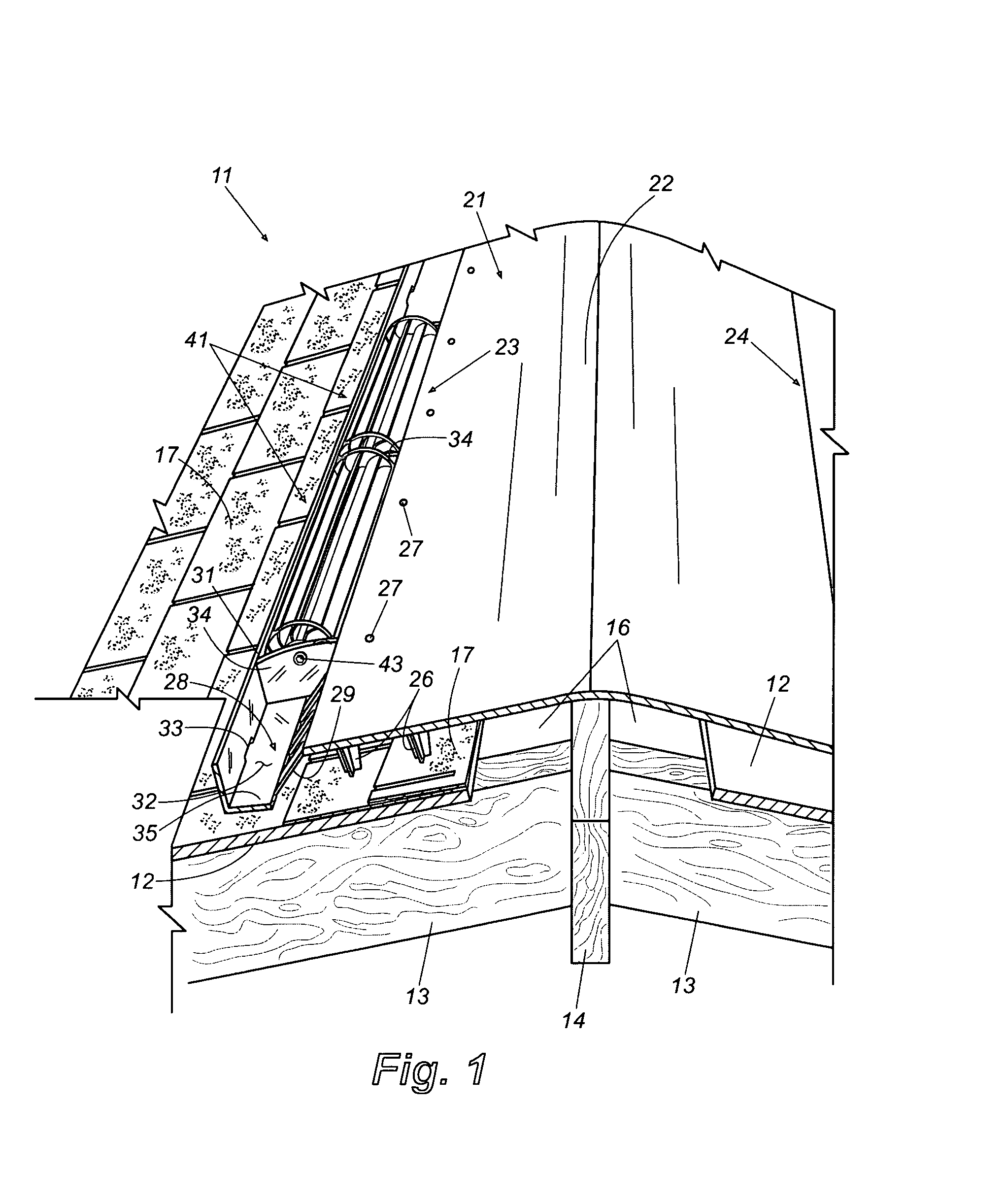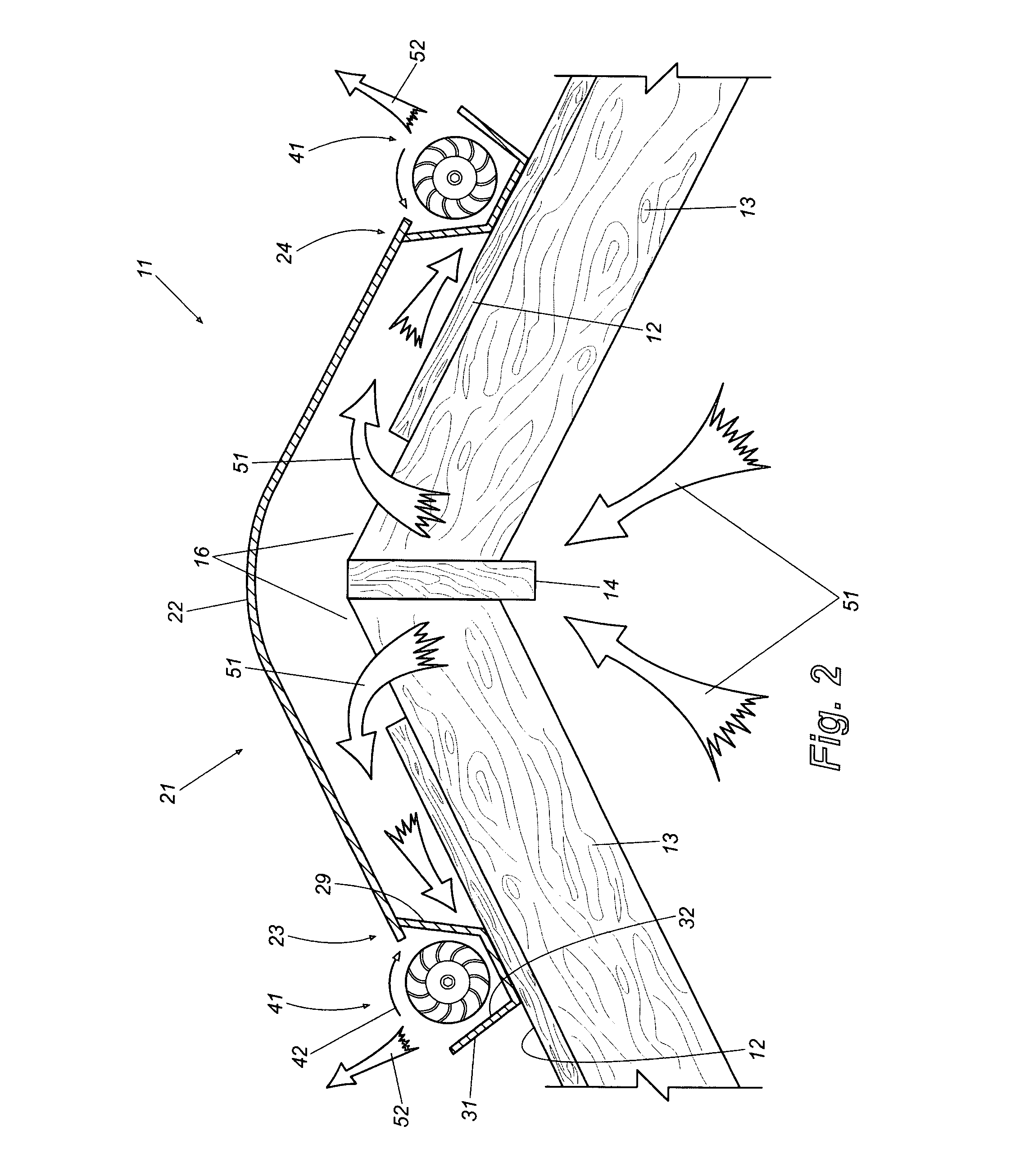Impeller exhaust ridge vent
a technology of ridge vents and impellers, which is applied in the field of attic ventilation systems, can solve the problems of cumbersome installation, lack of ventilation of moist humid, and numerous problems inherent in ventilation systems, and achieve the effect of efficient ventilation
- Summary
- Abstract
- Description
- Claims
- Application Information
AI Technical Summary
Benefits of technology
Problems solved by technology
Method used
Image
Examples
Embodiment Construction
[0018]FIG. 1 is a perspective partially sectional view of an impeller exhaust ridge vent of this invention installed on the ridge of a roof. It will be understood that while only a short section of the ridge vent is shown in FIG. 1, the ridge vent preferably extends along a substantial portion of the length of the roof ridge. This may be accomplished by attaching shorter ridge vent sections end to end along the ridge, or by using a continuous rolled ridge vent configuration as is known in the art. Further, while only one side of the ridge vent is depicted in FIG. 1, the non-visible side is substantially a mirror image thereof and descriptions of elements on the visible (left) side in FIG. 1 apply equally to the non visible (right) side.
[0019]Referring in more detail to FIG. 1, the impeller exhaust ridge vent 11 is installed along the ridge of a gable roof. The roof, in this example, comprises a roof deck 12 that is supported atop rafters 13. The rafters 13 meet and are attached at a...
PUM
 Login to View More
Login to View More Abstract
Description
Claims
Application Information
 Login to View More
Login to View More - R&D
- Intellectual Property
- Life Sciences
- Materials
- Tech Scout
- Unparalleled Data Quality
- Higher Quality Content
- 60% Fewer Hallucinations
Browse by: Latest US Patents, China's latest patents, Technical Efficacy Thesaurus, Application Domain, Technology Topic, Popular Technical Reports.
© 2025 PatSnap. All rights reserved.Legal|Privacy policy|Modern Slavery Act Transparency Statement|Sitemap|About US| Contact US: help@patsnap.com



